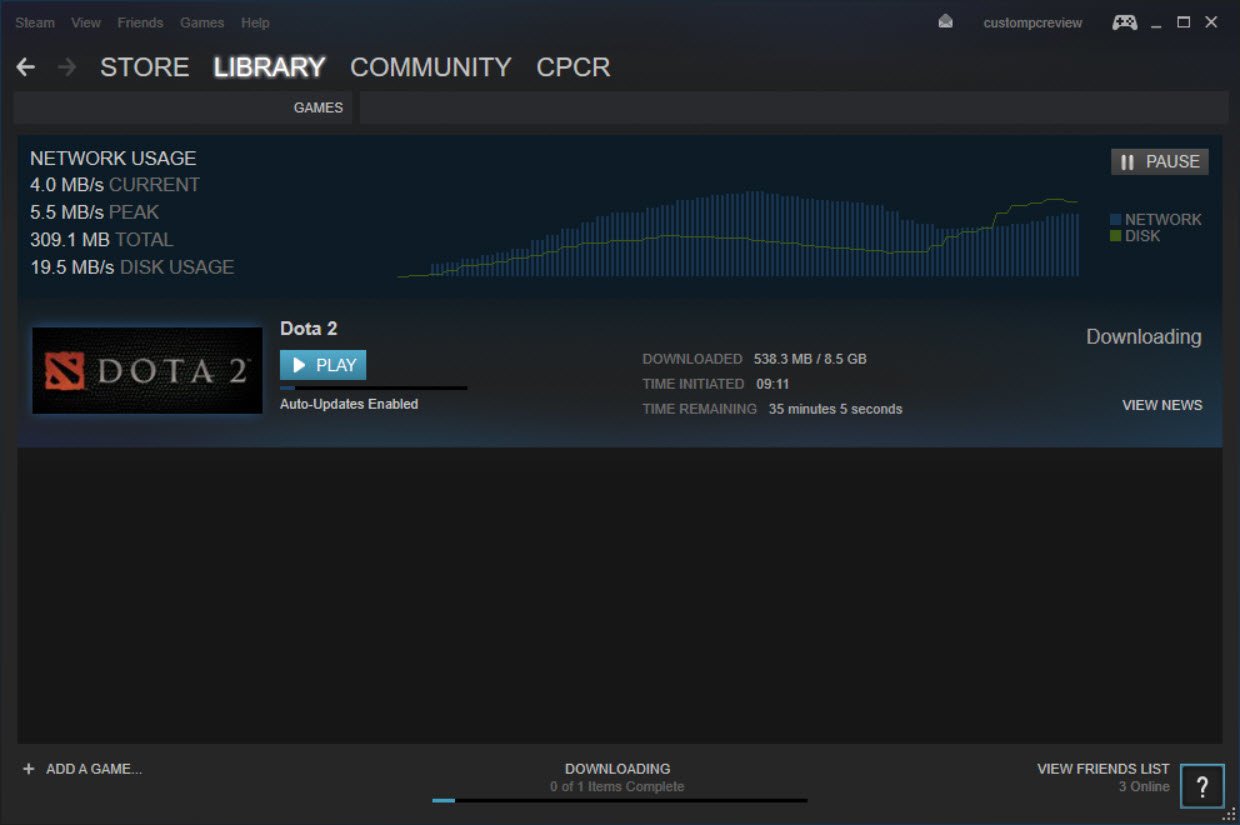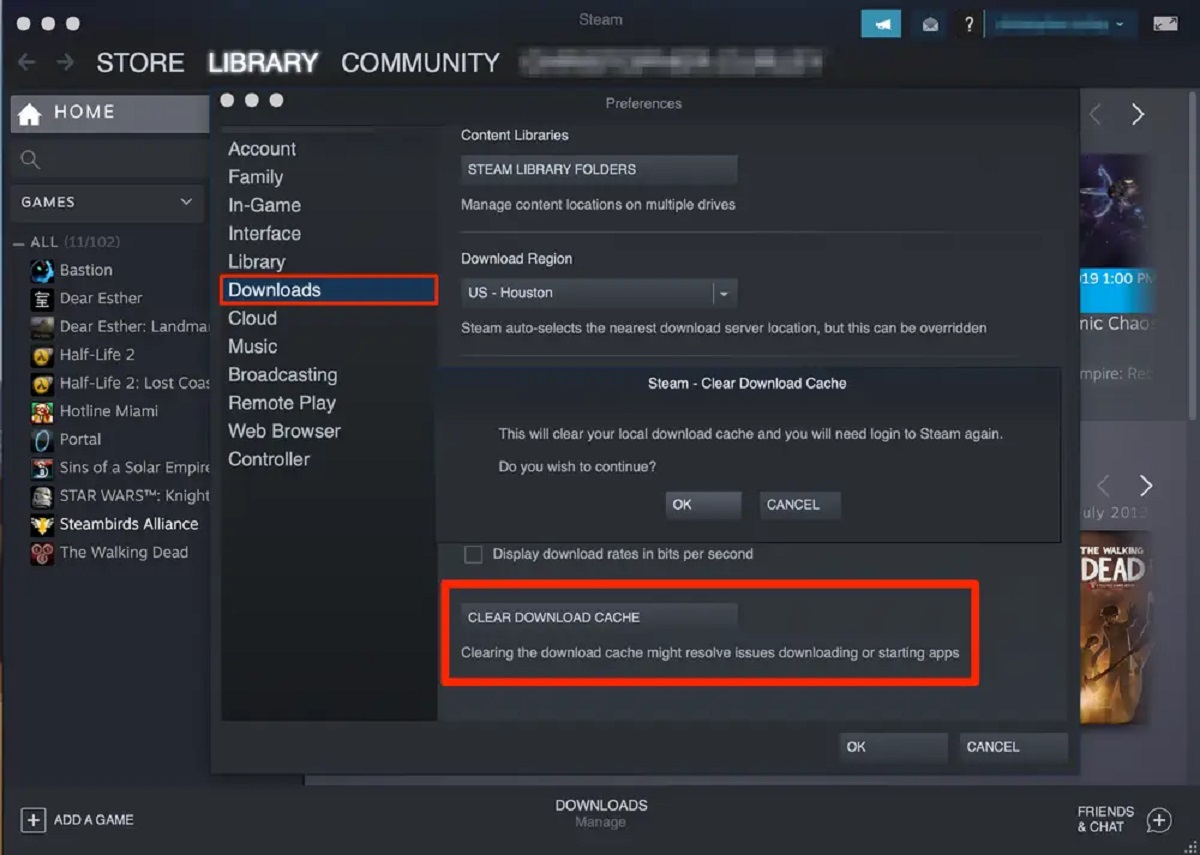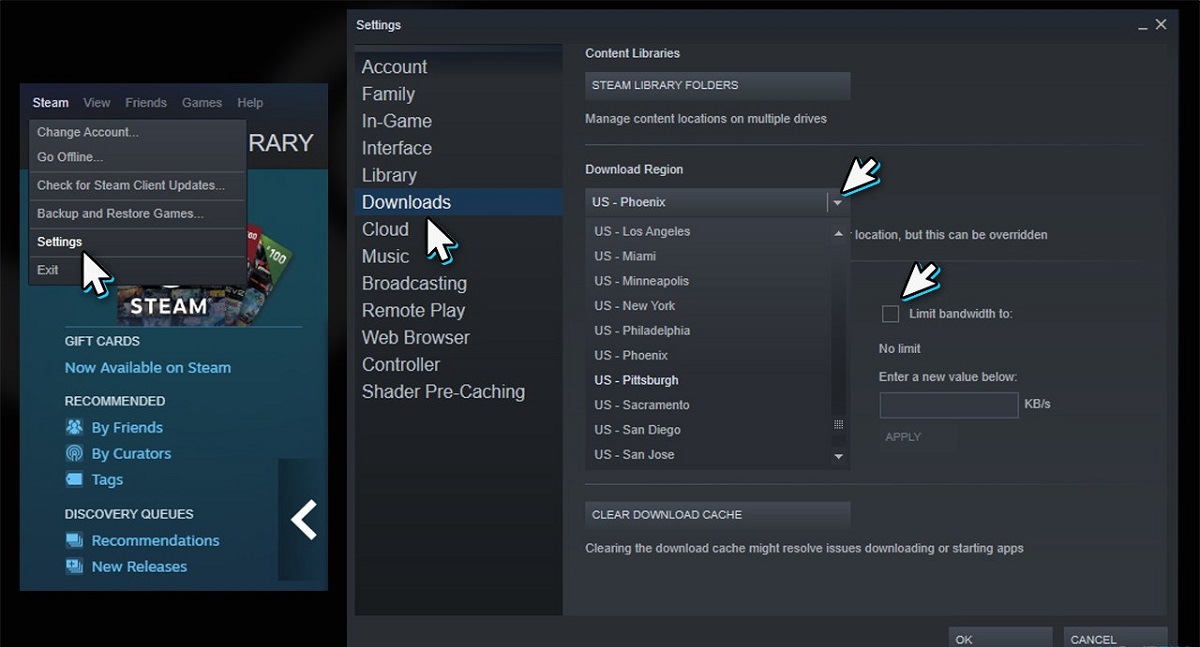Introduction
Steam is a popular platform for gamers to purchase, download, and play a wide variety of games. However, one common frustration for many users is slow download speeds when downloading games or updates from Steam. This can be especially frustrating when you’re eagerly anticipating playing a new game or getting the latest updates for your favorite titles.
If you’re facing slow download speeds on Steam, don’t worry – there are several strategies you can try to boost your download speed and get back in the game faster. In this article, we’ll explore some effective methods that can help optimize your download speed on Steam.
Before we dive into the solutions, it’s important to note that download speeds can be influenced by various factors such as your internet connection, network congestion, and server locations. Therefore, it may not be possible to achieve the maximum speed promised by your internet service provider. Nonetheless, by employing the following tips and tricks, you can potentially improve your download speed on Steam.
Optimize Internet Connection
Your internet connection plays a crucial role in determining how fast your downloads will be on Steam. Here are a few steps you can take to optimize your internet connection and improve your download speed:
- Check your internet speed: Run an internet speed test to determine your current download and upload speeds. If you’re not getting the speeds you’re supposed to be getting, reach out to your internet service provider (ISP) to address any issues.
- Use a wired connection: Whenever possible, connect your computer directly to your router using an Ethernet cable. Wired connections tend to be more stable and offer better speeds compared to wireless connections, especially for downloading large files.
- Manage other devices: If you have multiple devices connected to your network, such as smartphones, tablets, or other computers, consider limiting their bandwidth usage during the time when you want to download games on Steam. This can help ensure that the majority of your network’s bandwidth is allocated to your downloading process.
- Position your router strategically: Ensure that your router is placed in a central location in your home or office. Avoid obstacles such as walls or furniture that may interfere with the signal strength. Better signal strength can lead to faster download speeds.
- Upgrade your internet plan: If you consistently experience slow download speeds on Steam and have verified that your connection is not the issue, it might be worth considering upgrading your internet plan. Higher-tier plans often offer faster download speeds and more bandwidth, which can result in quicker downloads on Steam.
By taking these steps, you can optimize your internet connection and potentially improve your download speed on Steam. However, if slow download speeds persist, there may be other factors at play, which we will explore in the following sections.
Change Download Region
Steam allows users to choose their preferred download region, which can greatly impact download speeds. Here’s how you can change your download region to potentially improve your download speed:
- Open Steam settings: Launch the Steam client and click on “Steam” in the upper left corner. From the drop-down menu, select “Settings”.
- Select “Downloads” tab: In the settings window, click on the “Downloads” tab located on the left-hand side.
- Choose a different region: Under the “Download Region” section, click on the drop-down menu and choose a different region that is geographically closer to your location. Select a region that you believe will have less network congestion and more stable servers.
- Click “OK” to save changes: After selecting a new download region, click on the “OK” button to save your settings.
By changing your download region, you may be able to connect to a server with better performance, resulting in faster download speeds. Experiment with different regions until you find the one that works best for you.
It’s important to note that changing your download region won’t always guarantee a significant improvement in speed, especially if there are other factors affecting your internet connection. However, it is worth trying as it has helped many users in the past.
If changing the download region doesn’t enhance your download speed, there are other troubleshooting steps we will cover in the next sections to help you further improve your Steam download speeds.
Clear Download Cache
Over time, Steam can accumulate temporary files and data in its download cache, which can potentially slow down your download speeds. Clearing the download cache can help resolve this issue. Here’s how you can do it:
- Open Steam settings: Launch the Steam client and navigate to the “Steam” menu in the upper left corner. From the drop-down menu, select “Settings”.
- Select “Downloads” tab: In the settings window, click on the “Downloads” tab located on the left-hand side.
- Click on “Clear Download Cache”: Towards the bottom of the Downloads settings, you’ll find a button labeled “Clear Download Cache”. Click on it.
- Confirm the action: A confirmation prompt will appear. Click “OK” to proceed with clearing the download cache.
Steam will now clear its download cache, removing any accumulated temporary files. This action may take a few moments to complete.
After clearing the download cache, restart your Steam client and check if your download speed has improved. In some cases, clearing the cache can lead to a noticeable acceleration in download speeds.
It’s recommended to periodically clear the download cache to ensure optimal performance with Steam. If you continue to experience slow download speeds, continue reading the following sections for more troubleshooting methods.
Limit Bandwidth Usage
If you’re experiencing slow download speeds on Steam, it’s possible that other applications or devices on your network are consuming a significant amount of bandwidth. By limiting their bandwidth usage, you can allocate more resources to your Steam downloads. Here’s how you can do it:
- Identify bandwidth-hungry applications: Take note of which applications or devices are using the most bandwidth on your network. This can be done by checking your router’s administration settings or by using network monitoring software.
- Reschedule or pause downloads on other devices: If you have downloads or updates running on other devices connected to your network, consider pausing or rescheduling them while you’re downloading games on Steam. This will ensure that the majority of your bandwidth is dedicated to Steam.
- Close bandwidth-intensive applications: Close any applications or processes on your computer that are consuming excessive bandwidth. This includes streaming services, cloud backups, and torrent clients, among others. By closing these applications, you free up bandwidth for Steam.
- Enable Quality of Service (QoS) on your router: If your router supports Quality of Service (QoS) settings, you can prioritize specific devices or applications, including Steam, to ensure they receive a larger share of the bandwidth. Consult your router’s documentation or manufacturer’s website to configure QoS settings.
By limiting the bandwidth usage of other devices and applications, you can redirect more resources towards your Steam download, potentially resulting in faster speeds. Remember to restore normal bandwidth settings once your download is complete.
If limiting the bandwidth usage doesn’t have a significant impact on your download speed, there are additional steps you can take to further improve your Steam download speeds, which we will explore in the following sections.
Close Background Applications
Running multiple applications in the background while downloading games on Steam can consume valuable system resources, affecting your download speed. Closing unnecessary background applications can help optimize your system’s performance and potentially improve your download speeds. Here’s what you can do:
- Identify resource-intensive applications: Open the Task Manager (Ctrl+Shift+Esc on Windows or Command+Option+Esc on Mac) and navigate to the “Processes” or “Applications” tab. Look for applications that are actively consuming a significant amount of CPU or memory resources.
- Close unnecessary applications: Right-click on the applications you identified and select “End Task” or “Quit” to close them. Be cautious when closing applications, as closing critical system processes can have unintended consequences. Focus on closing applications that are not essential for your current task.
- Disable startup programs: Some applications automatically start when you turn on your computer, consuming resources in the background. To limit their impact on your system’s performance and download speed, disable unnecessary startup programs. You can access these settings through the Task Manager or the System Preferences on Mac.
By closing resource-intensive background applications and disabling unnecessary startup programs, you free up system resources for Steam to use, potentially resulting in improved download speeds.
It’s worth noting that certain applications, such as antivirus software or system utilities, may be essential for maintaining the security and stability of your computer. Consider the importance of each application before closing it. If you’re unsure, seek guidance from an IT professional.
If closing background applications doesn’t significantly improve your download speed on Steam, there are still more steps you can take to enhance the performance, which we will cover in the following sections.
Disable Auto Updates
Auto-updates for applications and system software can run in the background, utilizing network resources and potentially slowing down your download speeds on Steam. Disabling auto-updates temporarily can help allocate more bandwidth to your Steam downloads. Here’s how you can do it:
- Disable auto-updates on Steam: Open the Steam client and go to “Steam” in the upper left corner. From the drop-down menu, select “Settings”. In the Settings window, click on the “Downloads” tab and uncheck the box that says “Allow downloads during gameplay” and “Allow downloads during game updates”.
- Disable auto-updates on other applications: Many applications have their own auto-update settings. Check preferences or settings for other applications on your computer and disable auto-updates while you’re downloading games on Steam.
- Disable auto-updates on your operating system: Operating systems often have automatic updates enabled by default. Turn off automatic updates temporarily to prevent them from running in the background and affecting your download speeds. Consult your operating system’s documentation for instructions on how to disable automatic updates.
By disabling auto-updates, you can prevent background processes from utilizing network resources, allowing Steam to download games faster. However, it’s essential to enable auto-updates after your download is complete to ensure your system and applications remain up-to-date and secure.
Keep in mind that disabling auto-updates may not have a significant impact on your download speeds if there are other factors affecting your internet connection. If you’re still experiencing slow speeds, continue reading the next sections for more solutions to improve your Steam download speeds.
Use a Wired Connection
Using a wired connection instead of a wireless one can significantly improve your download speeds on Steam. While Wi-Fi provides convenience, it may be prone to interference and signal degradation, resulting in slower download speeds. Here’s how you can switch to a wired connection:
- Connect your computer to the router: Locate an available Ethernet port on your router and connect one end of an Ethernet cable to the router and the other end to your computer or laptop.
- Disable Wi-Fi on your computer: To ensure your computer uses the wired connection, disable Wi-Fi functionality. You can usually do this through the network settings or by using a physical switch or button on your computer.
- Restart Steam: Restart the Steam client to ensure it recognizes the new wired connection. This will prompt Steam to prioritize the wired connection for your download.
Using a wired connection provides a stable and consistent connection, reducing the chances of interference or signal issues that can impact download speeds. While Wi-Fi can be convenient, especially for mobile devices, a wired connection is generally more reliable for downloading large files on Steam.
If you’re unable to switch to a wired connection, consider improving your Wi-Fi signal by minimizing obstructions, relocating your router to a more central location, or using Wi-Fi range extenders or mesh systems to enhance coverage.
By using a wired connection, you can maximize your internet speed potential and potentially see a significant improvement in your Steam download speeds.
If using a wired connection still doesn’t deliver the desired download speeds, there are additional troubleshooting steps we will cover in the following sections to further enhance your Steam download performance.
Verify Integrity of Game Files
Corrupted or incomplete game files can lead to slow download speeds and issues when running games on Steam. Verifying the integrity of game files can help identify and resolve any problematic files, potentially improving your download speed. Here’s how you can do it:
- Open Steam library: Launch the Steam client and navigate to your library by clicking on “Library” at the top of the client.
- Right-click on the game: Locate the game experiencing slow download speeds, right-click on it, and select “Properties” from the drop-down menu.
- Navigate to the “Local Files” tab: In the properties window, click on the “Local Files” tab located on the left-hand side.
- Click on “Verify Integrity of Game Files”: Under the “Local Files” tab, you’ll find a button labeled “Verify Integrity of Game Files”. Click on it.
- Wait for the process to complete: Steam will now verify the integrity of the game files. This process may take some time as Steam compares your game files with the latest versions available.
If any corrupt or missing files are detected during the verification process, Steam will automatically download and replace them. This will ensure that you have the necessary, error-free files required to run the game smoothly.
Verifying the integrity of game files can resolve any issues that may have been hindering your download speeds. After the process completes, restart your Steam client and check if your download speed improves.
If you continue to experience slow download speeds on Steam, don’t worry. We have a few more troubleshooting steps to explore in the following sections, which can help further enhance your Steam download performance.
Empty Steam Download Folder
Over time, the Steam download folder can accumulate residual or incomplete files from previous downloads, which can potentially hinder your download speeds. Emptying the Steam download folder can help resolve this issue. Here’s how you can do it:
- Exit Steam: Make sure the Steam client is completely closed. You can right-click on the Steam icon in the system tray and select “Exit” or “Quit”.
- Navigate to the Steam download folder: Open the file explorer on your computer and navigate to the following location:
- For Windows: C:\Program Files (x86)\Steam\steamapps\downloading
- For Mac: ~/Library/Application Support/Steam/steamapps/downloading
- Delete all files and folders: In the Steam downloading folder, select all the files and folders present and delete them permanently. Be careful not to delete any files outside the downloading folder.
By emptying the Steam download folder, you ensure that there are no residual or incomplete files that may affect your current download speed. Once the folder is empty, relaunch the Steam client and check if your download speed improves.
It’s important to note that emptying the download folder will remove any pending downloads in progress. You may need to restart those downloads after emptying the folder.
If emptying the Steam download folder doesn’t have a significant impact on your download speed, there are still a few more troubleshooting steps we will cover in the following sections to further optimize your Steam download performance.
Conclusion
Slow download speeds on Steam can be frustrating, especially when you’re eager to play your favorite games. Fortunately, there are several steps you can take to boost your download speeds and get back in the game faster.
Start by optimizing your internet connection and ensuring you have a stable and fast connection. Changing your download region can also help connect to servers with better performance. Clearing the download cache and limiting bandwidth usage can further optimize your download speeds.
Closing unnecessary background applications and disabling auto-updates can free up valuable system resources, allowing Steam to use more bandwidth for your downloads. Using a wired connection instead of Wi-Fi can provide a more stable and reliable connection, enhancing your download speeds.
Verifying the integrity of game files and emptying the Steam download folder can resolve any issues that may be hindering your download speed. Remember to periodically clear the cache and verify game files to ensure optimal performance.
While these strategies can help improve your download speeds on Steam, it’s important to keep in mind that various factors such as your internet connection, network congestion, and server locations can impact download speeds. Additionally, Steam may prioritize downloads from popular games, leading to slower speeds for less popular titles.
By implementing these techniques and troubleshooting steps, you increase your chances of optimizing your download speeds on Steam, allowing you to enjoy your games without the frustration of slow downloads.
Happy gaming!







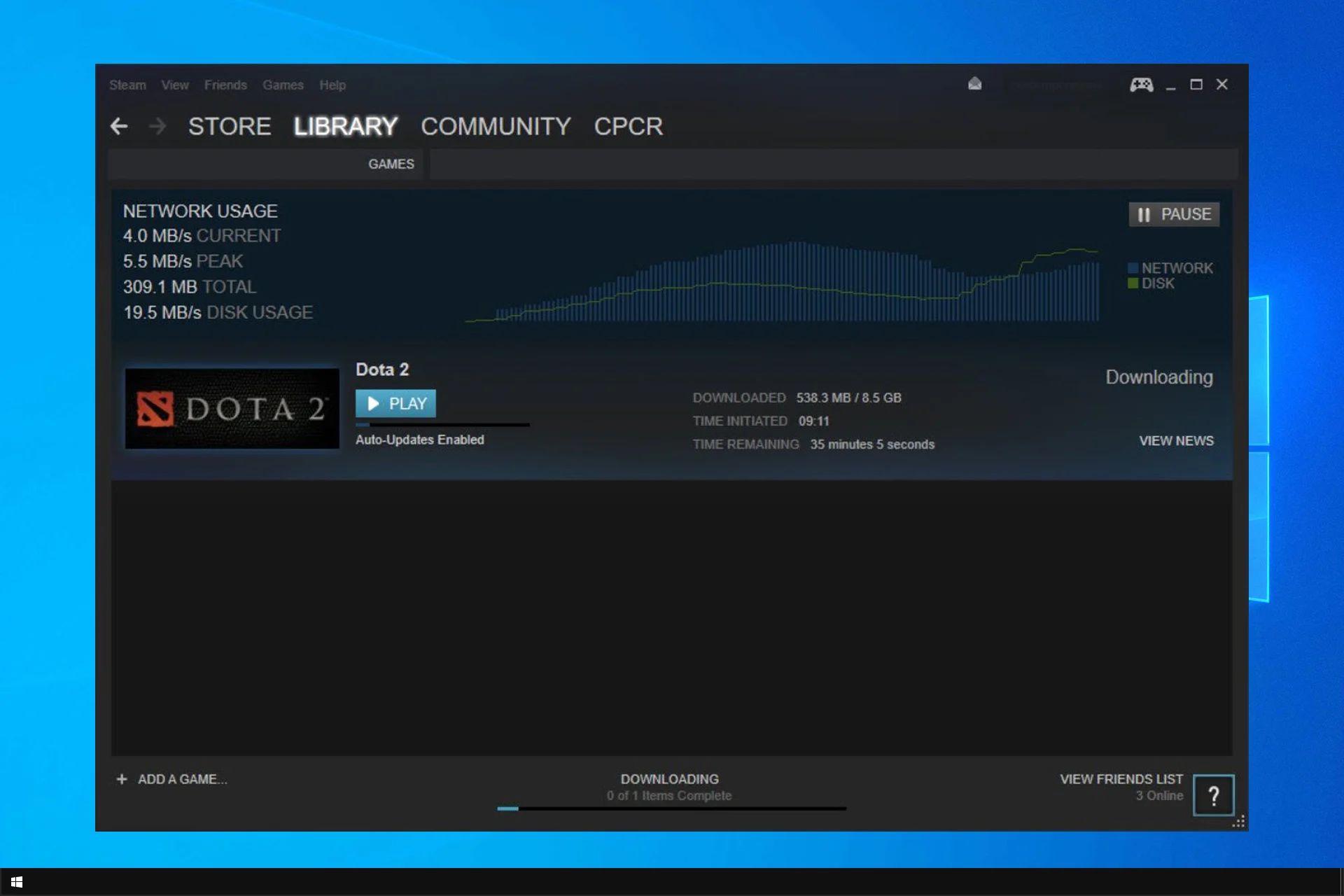

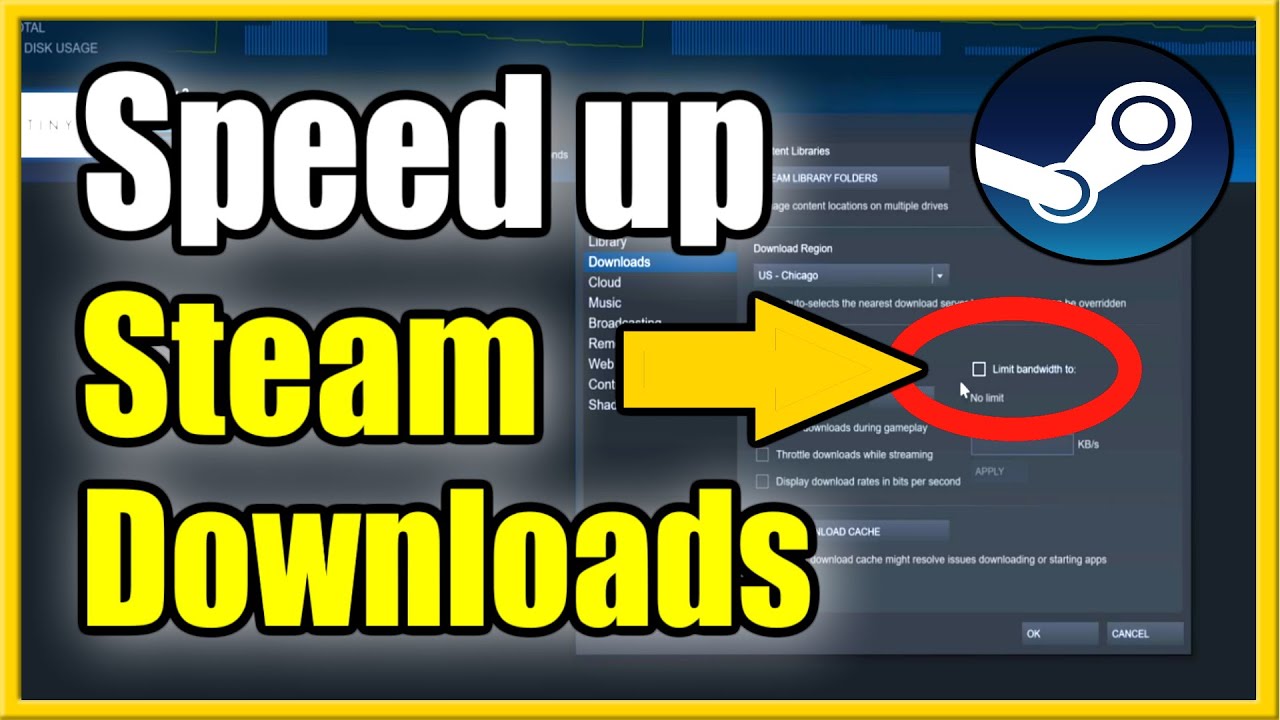
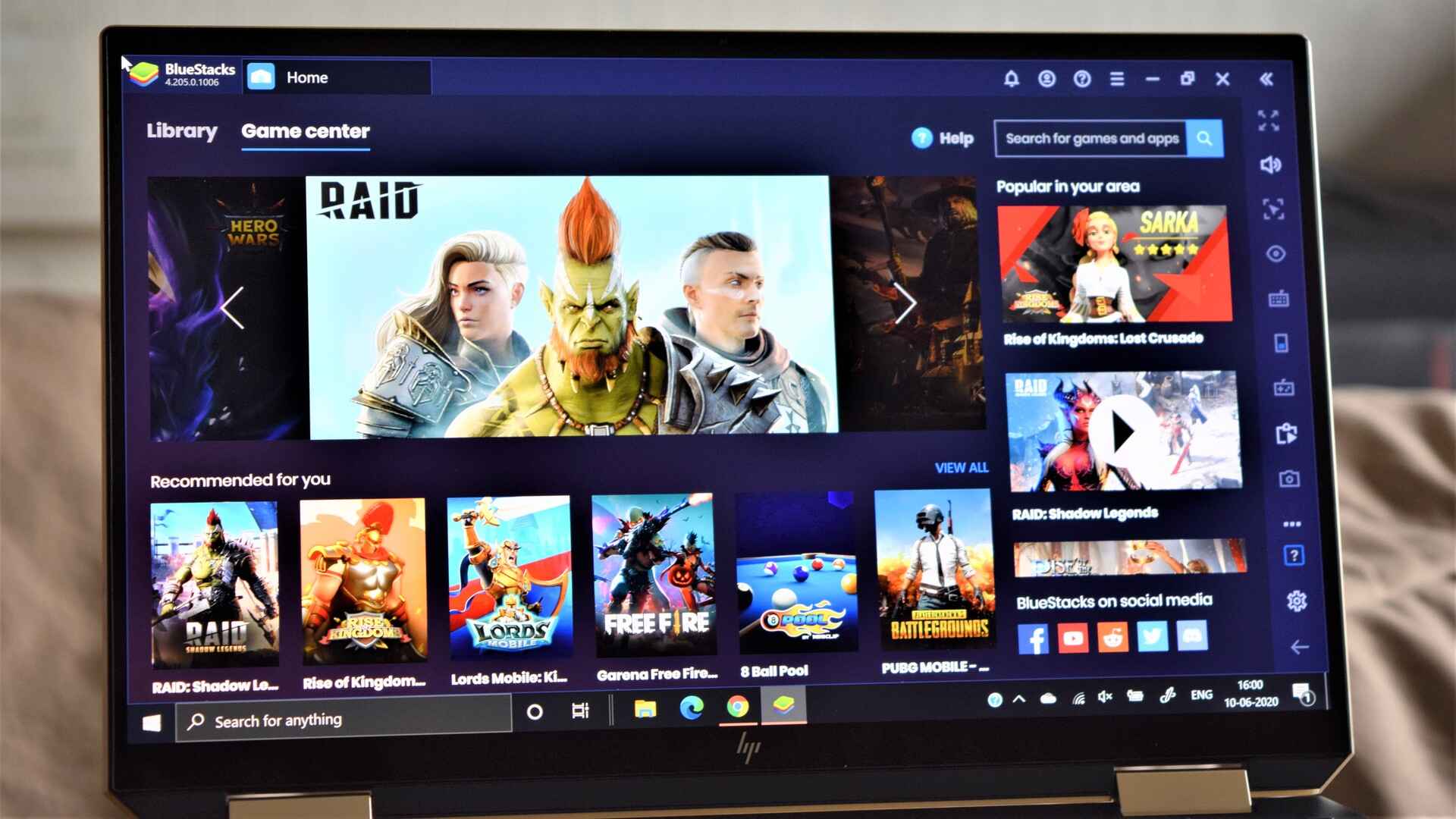
![How To Increase Your Internet Speed Right Now [GUIDE]](https://robots.net/wp-content/uploads/2022/04/how-to-increase-your-internet-speed-featured-300x175.jpg)
